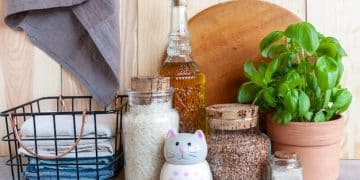Sustainable Fashion: 7 Tips for Building an Ethical Wardrobe

Sustainable fashion involves making conscious choices to reduce the environmental and social impact of clothing by opting for eco-friendly materials, ethical production, and practices like buying secondhand and supporting sustainable brands.
Creating a sustainable fashion wardrobe is about more than just buying clothes; it’s about making conscious choices that benefit both the planet and the people involved in the fashion industry. By adopting a few key strategies, you can transform your closet into a collection of ethically sourced and environmentally friendly garments.
Understanding Sustainable Fashion
Sustainable fashion is an approach to designing, manufacturing, and using clothing in a way that minimizes negative environmental and social impacts. It encompasses various aspects, including the use of eco-friendly materials, ethical labor practices, and responsible consumption.
What Makes Fashion Unsustainable?
The traditional fashion industry is known for its fast-paced trends and disposable clothing, leading to significant environmental degradation and social issues. This includes excessive water usage, pollution from textile production, and unfair labor practices.
One of the biggest issues is the use of synthetic materials like polyester, which are derived from fossil fuels and contribute to greenhouse gas emissions. Additionally, the dyeing and finishing processes often involve harmful chemicals that pollute waterways and endanger human health.
The Benefits of Sustainable Fashion
Switching to sustainable fashion offers numerous advantages. Environmentally, it reduces pollution, conserves water, and minimizes waste. Socially, it supports fair labor practices and improves working conditions. Economically, it encourages innovation and the growth of eco-friendly businesses.

Moreover, sustainable fashion promotes a more conscious and mindful approach to consumption, encouraging consumers to buy less and choose better. This can lead to long-term savings and a greater appreciation for the clothing we own.
In conclusion, understanding the principles and benefits of sustainable fashion is the first step toward building an ethical wardrobe. By recognizing the impact of our clothing choices, we can begin to make informed decisions that contribute to a more sustainable future.
Tip 1: Shop Secondhand and Vintage
One of the easiest and most impactful ways to embrace sustainable fashion is by shopping secondhand and vintage. This approach gives pre-owned clothing a new life, reducing the demand for new production and minimizing textile waste.
The Appeal of Secondhand Shopping
Shopping at thrift stores, consignment shops, and online marketplaces offers a wide range of unique and affordable clothing options. It’s a treasure hunt where you can find hidden gems and one-of-a-kind pieces that reflect your personal style.
Secondhand shopping also allows you to support local businesses and charities, as many thrift stores are run by non-profit organizations. This creates a positive cycle of giving back to the community while reducing your environmental footprint.
Tips for Successful Secondhand Shopping
- Check the Quality: Look for items that are in good condition, with no major stains, tears, or damage.
- Try Things On: Sizes can vary, so it’s always best to try on clothing before purchasing to ensure a good fit.
- Be Open-Minded: Sometimes the best finds are unexpected, so be willing to explore different styles and brands.
- Wash Before Wearing: Always wash secondhand clothing before wearing to ensure hygiene and freshness.
By embracing secondhand and vintage shopping, you not only reduce waste but also add character and history to your wardrobe. It’s a sustainable and stylish way to express your individuality.
Tip 2: Invest in Quality, Timeless Pieces
Another key strategy for building a sustainable wardrobe is to invest in high-quality, timeless pieces that will last for years. These items should be versatile and designed to withstand trends, providing long-term value and reducing the need for frequent replacements.
What to Look for in Quality Clothing
When shopping for quality clothing, pay attention to the materials, construction, and craftsmanship. Look for durable fabrics like organic cotton, linen, wool, and hemp, which are known for their longevity and sustainability.
Check the seams, buttons, and zippers to ensure they are securely attached and well-made. High-quality clothing should have a solid structure and be designed to withstand regular wear and washing without losing its shape or integrity.
Building a Capsule Wardrobe
A capsule wardrobe consists of a limited number of essential clothing items that can be mixed and matched to create a variety of outfits. This approach promotes mindful consumption and reduces the clutter in your closet.

Start by identifying your core wardrobe pieces, such as a classic white shirt, a well-fitting pair of jeans, a versatile blazer, and a comfortable pair of shoes. Choose items that reflect your personal style and can be easily dressed up or down for different occasions.
Investing in quality, timeless pieces is a sustainable and economical way to build a wardrobe that you’ll love for years to come. It reduces the need for constant shopping and promotes a more mindful approach to fashion.
Tip 3: Choose Sustainable Fabrics
Selecting sustainable fabrics is crucial for minimizing the environmental impact of your wardrobe. These fabrics are made from eco-friendly materials and produced using processes that reduce pollution, conserve water, and promote fair labor practices.
Popular Sustainable Fabrics
Several sustainable fabrics are gaining popularity in the fashion industry. Organic cotton is grown without the use of synthetic pesticides and fertilizers, reducing its impact on the environment and human health.
Recycled polyester is made from post-consumer plastic bottles and other waste materials, diverting them from landfills and reducing the demand for new petroleum-based products. Hemp is a fast-growing plant that requires little water and no pesticides, making it a highly sustainable option.
Certifications to Look For
When shopping for sustainable fabrics, look for certifications like GOTS (Global Organic Textile Standard), which ensures that the fabric is made from organic materials and processed according to strict environmental and social standards.
- Oeko-Tex Standard 100: Certifies that the fabric is free from harmful chemicals and safe for human use.
- Fair Trade: Guarantees that the workers involved in the production of the fabric are paid fair wages and work in safe conditions.
- Bluesign: Ensures that the fabric is produced using processes that minimize environmental impact and promote resource efficiency.
Choosing sustainable fabrics is an important step toward building an ethical wardrobe. By supporting eco-friendly materials and certifications, you can help create a more sustainable fashion industry.
Tip 4: Support Ethical Brands
Supporting ethical brands is essential for promoting fair labor practices and social responsibility in the fashion industry. These brands prioritize the well-being of their workers and communities, ensuring that they are treated with respect and dignity.
What Makes a Brand Ethical?
Ethical brands are committed to transparency and accountability in their supply chains. They provide fair wages, safe working conditions, and opportunities for training and development to their workers. They also prioritize environmental sustainability and social responsibility in their business practices.
Many ethical brands work with artisans and small-scale producers, supporting local economies and preserving traditional crafts. They also invest in community development projects, such as education and healthcare initiatives, to improve the lives of the people in their supply chains.
How to Identify Ethical Brands
- Check Their Website: Look for information about their ethical practices, supply chain transparency, and social responsibility initiatives.
- Read Reviews: See what other customers are saying about the brand’s ethical practices and product quality.
- Look for Certifications: Check for certifications like Fair Trade, B Corp, and WRAP, which verify the brand’s commitment to ethical and sustainable practices.
- Ask Questions: Contact the brand directly to ask about their ethical practices and supply chain transparency.
By supporting ethical brands, you can help create a fashion industry that values people and the planet. It’s a powerful way to use your purchasing power to promote positive change.
Tip 5: Take Care of Your Clothes
Extending the life of your clothing is a simple yet effective way to reduce waste and minimize your environmental impact. Proper care and maintenance can help your clothes last longer, reducing the need for frequent replacements and conserving resources.
Proper Washing Techniques
Wash your clothes in cold water to conserve energy and prevent fading. Use a gentle, biodegradable detergent and avoid harsh chemicals that can damage fabrics. Air-dry your clothes whenever possible to save energy and prolong their lifespan.
Avoid over-washing your clothes, as this can cause them to wear out faster. Only wash items when they are visibly dirty or smelly. Spot-clean stains as soon as possible to prevent them from setting in.
Repair and Alterations
Learn basic sewing skills so you can repair minor tears, replace buttons, and fix zippers. Consider taking your clothes to a tailor for more complex alterations or repairs. This can give your clothes a new lease on life and save you money in the long run.
Also, proper storage of clothes can greatly extend it´s life. Make sure to store your out of season clothes properly in plastic bins or some other method to keep them safe.
By taking care of your clothes, you’re not only saving money but also reducing waste and contributing to a more sustainable fashion industry. It’s a conscious choice that makes a big difference.
Tip 6: Participate in Clothing Swaps and Rentals
Clothing swaps and rentals offer innovative ways to refresh your wardrobe without contributing to overconsumption. These options allow you to access a variety of styles and trends while reducing waste and saving money.
How Clothing Swaps Work
Clothing swaps involve gathering with friends, family, or community members to exchange clothing items that you no longer wear. It’s a fun and social way to give your unwanted clothes a new home and find new treasures for yourself.
Organize a clothing swap by inviting participants to bring gently used clothing items that are clean and in good condition. Set up a space where everyone can display their items and browse through the selection. Encourage participants to try on clothes before swapping to ensure a good fit.
The Benefits of Clothing Rentals
Clothing rental services allow you to rent clothing items for a specific period, such as a weekend, a month, or a season. This is a convenient and affordable way to access designer clothing and special occasion outfits without having to purchase them.
- Cost-Effective: Renting clothing is often cheaper than buying new items, especially for special occasions.
- Sustainable: It reduces the demand for new clothing production and minimizes textile waste.
- Variety: It allows you to experiment with different styles and trends without committing to a purchase.
- Convenient: Rental services typically handle cleaning and maintenance, saving you time and effort.
Participating in clothing swaps and rentals is a sustainable and stylish way to update your wardrobe. It’s a win-win situation that benefits both you and the environment.
Tip 7: Educate Yourself and Others
Staying informed about the latest developments in sustainable fashion and educating others about the importance of ethical consumption is crucial for driving positive change in the industry. Knowledge is power, and by sharing what you learn, you can inspire others to make sustainable choices.
Stay Updated on Sustainable Fashion Trends
Follow sustainable fashion blogs, social media accounts, and industry publications to stay informed about the latest trends and innovations. Attend workshops, webinars, and conferences to learn from experts and connect with like-minded individuals.
Read books and articles about sustainable fashion to deepen your understanding of the issues and solutions. Watch documentaries and films that explore the environmental and social impacts of the fashion industry.
Share Your Knowledge
Talk to your friends, family, and colleagues about the importance of sustainable fashion. Share tips and resources on social media and in your community. Organize events and workshops to educate others about ethical consumption and sustainable living.
By educating yourself and others, you can help create a more informed and conscious consumer base. This will encourage brands to adopt more sustainable practices and drive positive change in the fashion industry.
| Key Point | Brief Description |
|---|---|
| ♻️ Shop Secondhand | Buy pre-owned clothes to reduce demand for new production. |
| 🌱 Sustainable Fabrics | Choose organic cotton, recycled polyester, or hemp. |
| 🤝 Support Ethical Brands | Prioritize brands with fair labor practices & transparency. |
| 🧺 Clothing Swaps | Exchange clothes with others to refresh your wardrobe sustainably. |
FAQ
▼
Sustainable fashion is designing, manufacturing, and using clothes in an environmentally and socially responsible manner, minimizing negative impacts.
▼
It reduces pollution, conserves resources, supports ethical labor practices, and promotes responsible consumption, helping to protect the planet and its people.
▼
Begin by shopping secondhand, investing in quality pieces, choosing sustainable fabrics, and supporting ethical brands to make conscious and eco-friendly choices.
▼
Common sustainable fabrics include organic cotton, recycled polyester, hemp, linen, and Tencel, each known for their eco-friendly properties and reduced environmental impact.
▼
Look online for certified B Corporations, search ethical brand directories, and read reviews to find companies committed to transparent and sustainable practices.
Conclusion
Embracing sustainable fashion is a journey that involves making conscious choices and adopting mindful practices. By following these seven tips, you can build an ethical wardrobe that reflects your values and contributes to a more sustainable future. Every small step counts, and together, we can create a fashion industry that is both stylish and responsible.





